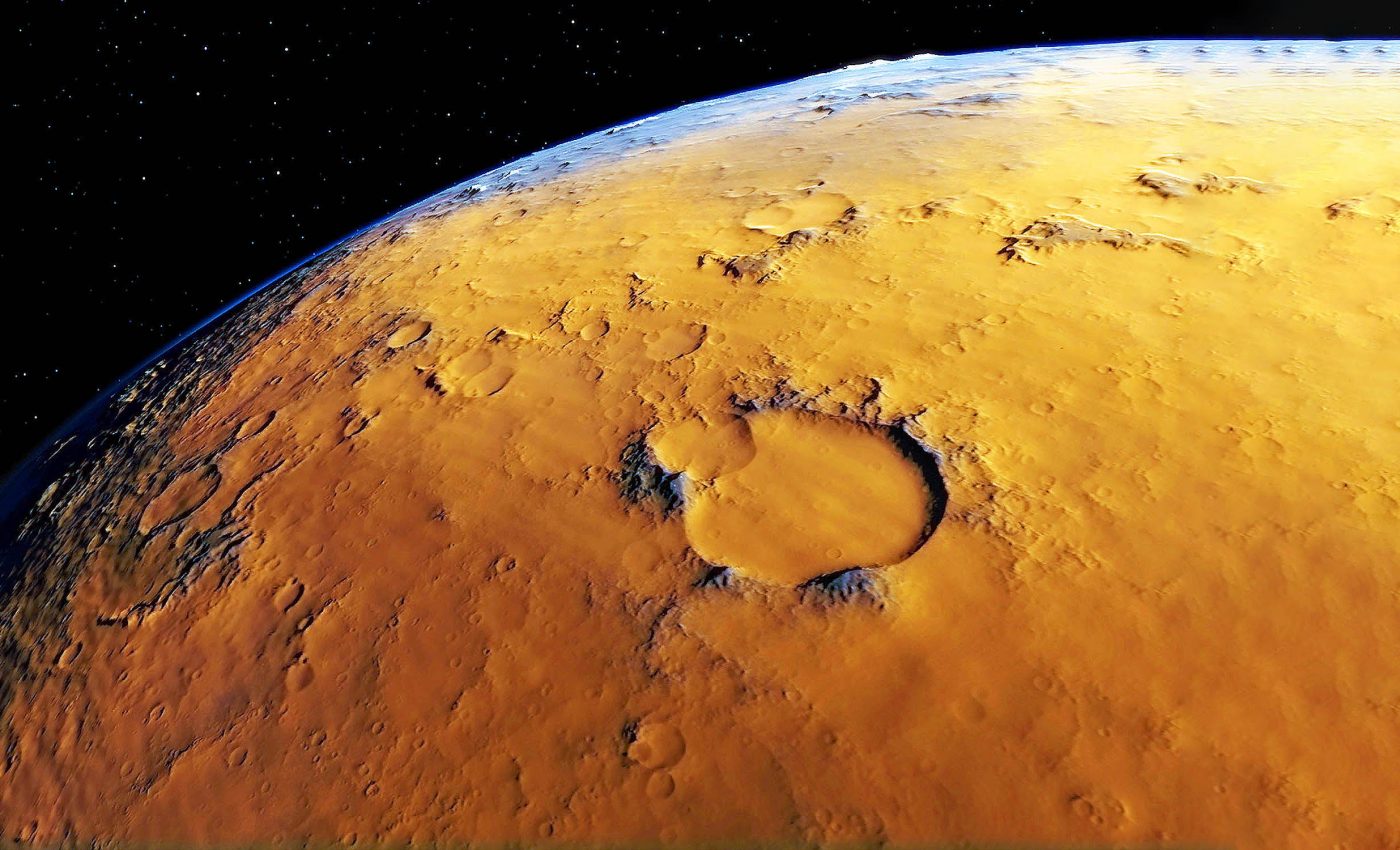
Mysterious holes on Mars might harbor life and are crucial for exploration
The Red Planet has always been a source of fascination for scientists and the general public alike, with its dusty landscapes and potential for harboring life.
Recent discoveries of mysterious holes on Mars have reignited our curiosity, sparking speculation about their origins and what they might hold.
Mars holes and volcanic past
Scientists first captured images of these intriguing holes using the HiRISE camera in 2022, but their formation remains a subject of ongoing research.
One prevailing theory suggests that these holes are “skylights” formed when the ground above ancient lava tubes collapsed.
Lava tubes, akin to long caves, are created during volcanic eruptions as lava flows downhill, leaving behind empty tunnels as the surface cools and hardens.
“There’s more than one of these [pits] on Mars that we’ve seen,” said Brandon Johnson, a geophysicist at Purdue University who studies impact craters across the solar system. “But they’re really interesting because they’re places where astronauts might be able to go and be safe from radiation.”
A refuge from Mars’ harsh radiation
Mars’ thin atmosphere and lack of a global magnetic field like Earth’s leave it exposed to dangerous levels of radiation. This poses a significant challenge for future human missions to the planet.
However, these newly discovered holes offer a glimmer of hope. If they lead to sufficiently large lava tubes, they could provide astronauts with much-needed protection from the harsh Martian environment.
“On Earth, these lava tubes can be large enough to walk around in, but they can also be small or the voids can be discrete or discontinuous,” explained Ross Beyer, a planetary scientist with the SETI Institute.
“So these pits we see could open into larger caves, or they could just be isolated pits. There’s no way to know what’s in them until we explore them in more detail.”
Exploring the depths with Mars holes
While there is no concrete timeline for sending humans to Mars, scientists are exploring alternative methods to delve into these mysterious pits.
One possibility involves deploying robots to descend into the holes and investigate their interiors.
“There are missions proposed to essentially have a robot go on a line and drop down into one of these skylights and be able to explore what’s inside of them,” said Johnson, although he noted that no such mission is currently underway.
Are we alone in the universe?
While the discovery of these pits on Mars does not definitively confirm the existence of life, it opens up a realm of exciting possibilities.
Lava tubes, with their inherent ability to maintain stable temperatures and shield against harmful radiation, could have served as sanctuaries for lifeforms in Mars’ past.
It is conceivable that these subterranean environments might still harbor remnants of these lifeforms, either dormant or actively adapting to the challenging Martian conditions.
This discovery underscores the importance of further exploration and investigation of these pits to determine if they hold the key to unlocking the secrets of life beyond Earth.
Future of Mars exploration
As technology advances and our understanding of Mars deepens, the prospect of sending humans to explore these mysterious holes becomes increasingly tangible.
The potential for discovering life, or at the very least, finding suitable shelters for future astronauts, makes these Martian pits an exciting frontier in our ongoing quest to unravel the secrets of the universe.
In the meantime, scientists continue to analyze data and images from Mars, hoping to gain further insights into these enigmatic formations.
The mysteries surrounding these holes only fuel our fascination with the Red Planet and drive us to continue exploring its vast and unknown landscapes.
Challenges and considerations
While the prospect of finding life or astronaut havens in Martian lava tubes is captivating, there are numerous challenges to overcome before humans can venture into these subterranean realms.
The extreme temperatures, lack of atmosphere, and potential hazards within the caves pose significant risks that require careful planning and technological advancements.
Moreover, the ethical implications of exploring and potentially disturbing a pristine Martian environment must be carefully considered.
The search for life beyond Earth raises profound questions about our place in the universe and the responsibilities that come with such discoveries.
Overall, the mysterious holes on Mars serve as a reminder of the vast unknowns that still exist within our own solar system. They beckon us to explore, to seek answers to fundamental questions about life and our place in the cosmos.
—–
Like what you read? Subscribe to our newsletter for engaging articles, exclusive content, and the latest updates.
Check us out on EarthSnap, a free app brought to you by Eric Ralls and Earth.com.
—–














